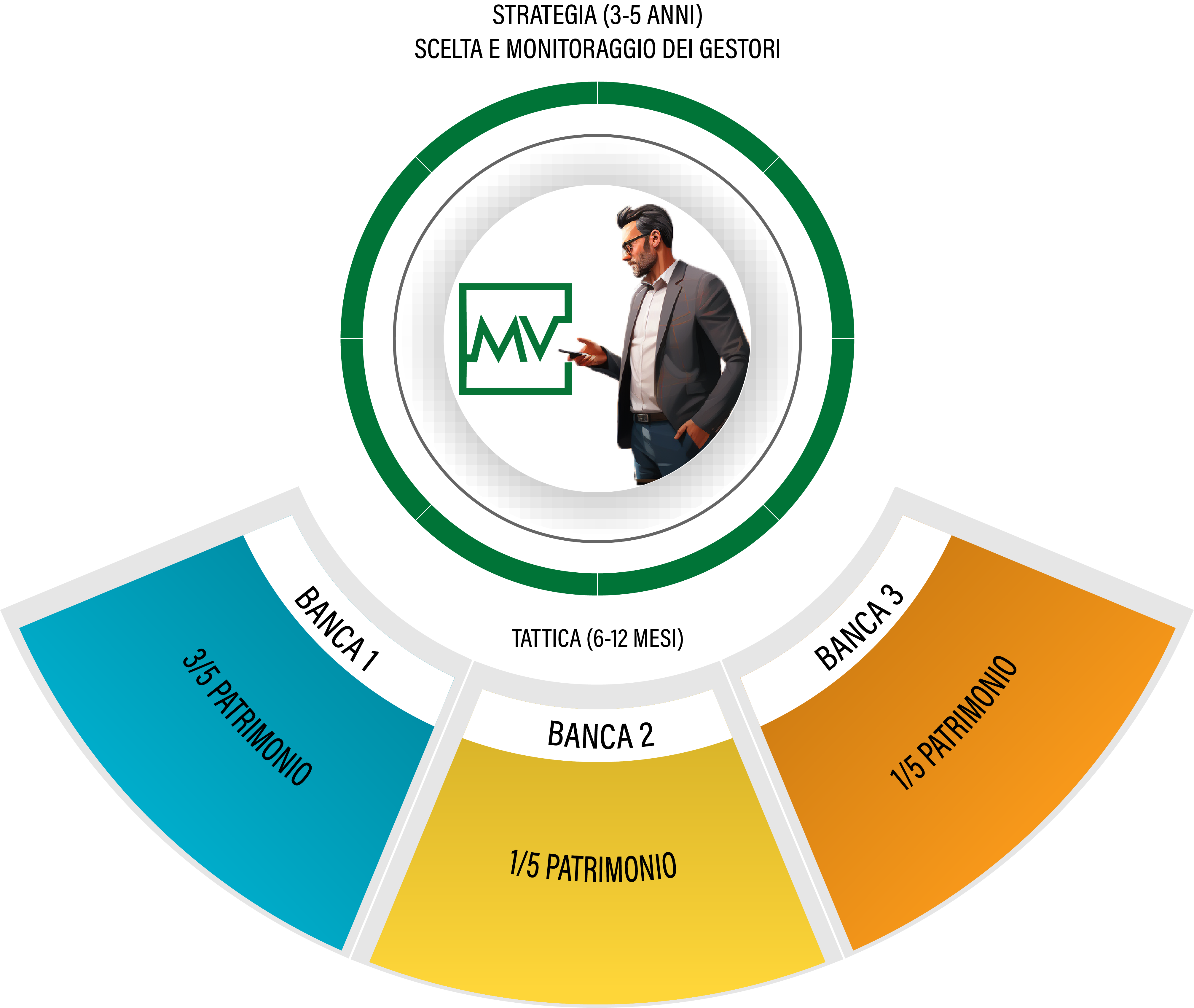Scope of assets
The concept of a Family Office was developed as a way of coordinating and managing significant private wealth in a single organisational centre.
Starting point

Arrival point

The definition of the Client’s objectives and risk profile, the choice of the most appropriate investment strategy and its optimal implementation are performed in several stages and require the involvement of many experts and specialist skills.
We provide comprehensive advice free from any conflicts of interest

Keeping a clear overview of this complex process and the role of each party is essential to achieve good results in the long term.
We believe that our most important mission with regard to wealth is to serve as centre of excellence offering guidance, coordination and control of the entire investment process. This reduces the burden of managing the process for Clients to the extent they decide – while offering them access to skills that will deliver excellent results.


